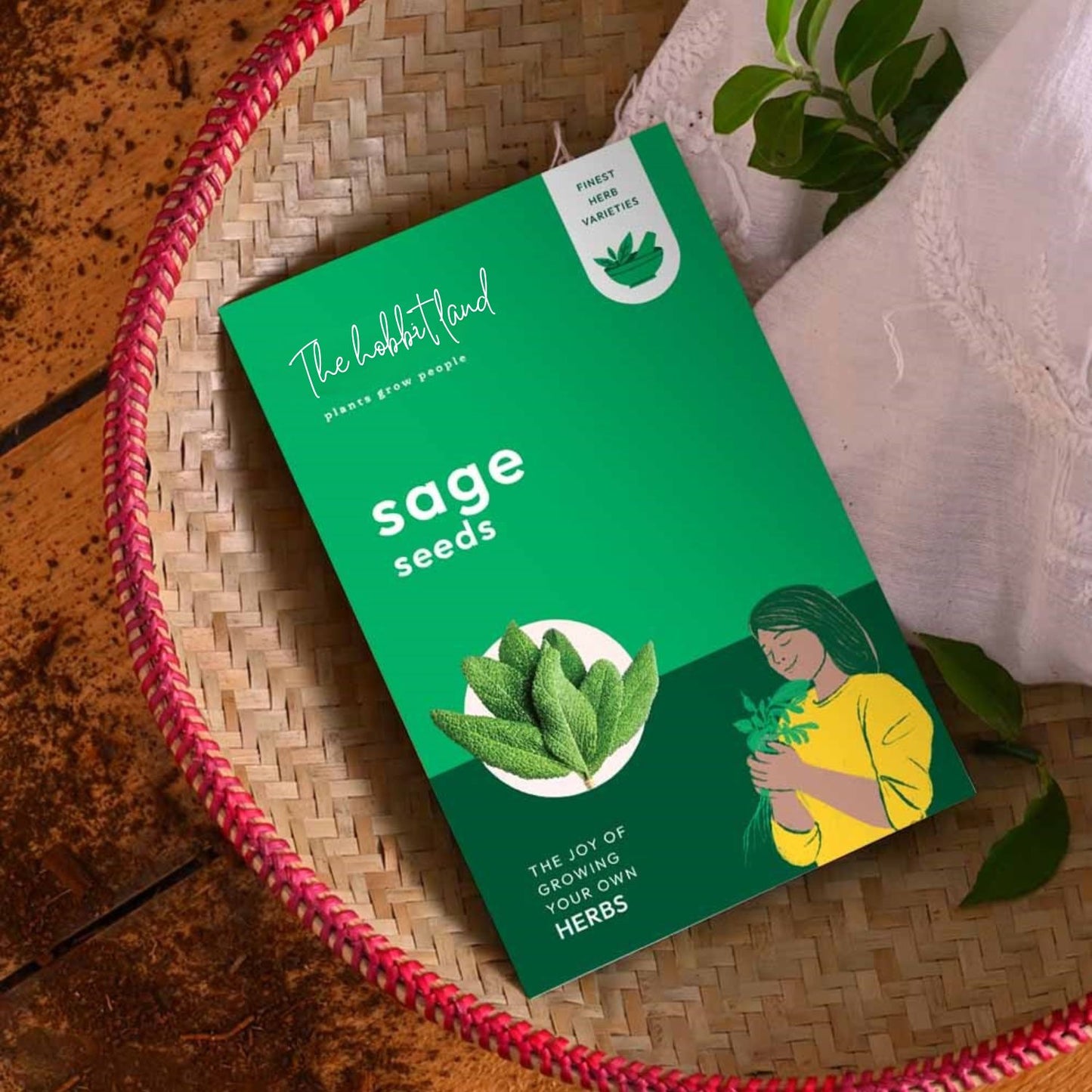Sage Broad Leaf
Sage Broad Leaf
Sage is a hardy perennial herb that is grown for its fragrant broad leaves. The leaves are grayish-green and the bluish-purple flowers are edible, used fresh or dried to flavor other dishes. It is a woody or subshrub herb plant belonging to the mint family and is easy to grow and does not require any special conditions after planting.
What size grow bag is best for Broad leaf sage?
12 x 12 (W*H)
15 x 12 (W*H)
15 x 15 (W*H)
24 x 12 (W*H)
Sage Growing Season In India
Sage Sown from October to November and harvest from November to February. In central and southern India, it can be grown from September to February.
How To Grow Sage Broad Leaf
Sow the sage seeds directly or by seedling method, it grows well in both ways. To plant sage from seeds, select a pot or grow bag 30-60 cm wide and 30-36 cm deep with good-draining holes. The optimum temperature for germination of sage seeds is 18-21°C.
Sage Broad Leaf Seeds Sowing Method
• Take a pot or grow bag, fill them with soil and add organic fertilizer then sprinkle 5-10 sage seeds over the soil and cover the seeds with a thin layer of soil. Water the soil deeply through a watering can and put the pot in a sunny spot. Sage seeds germinate in about 10-21 days, they may germinate early or late depending on growing conditions.
• If you have grown sage in a seedling tray, you need to transplant them into larger pots after the seeds have germinated and when the seedlings are a few inches tall. Sage should be planted in a large pot about 25-30 cm apart. For better plant growth add organic manure to the soil, give proper water to the sage plant and try to keep the soil moist.
Fertilizer For Sage Plants
Add an organic-rich fertilizer to the soil for the best results for the sage plant, but don't overfeed as the leaves may lose their flavor.
Sage Plants Care Tips
Soil : Use well-drained, sandy, or loamy soil with a pH of 6.0-6.5 for planting sage.
Water : Sage is a drought-tolerant plant so it requires moderate watering. You should provide 2-2.5 cm of water per week and keep the soil moist. Water should be given early in the day so that the wet leaves have enough time to dry and do not give overhead watering.
Sunlight : Sage plants require at least 6 hours of direct sunlight each day. However, they can grow in some shade on hot days.
Temperature : Sage plants like moderate humidity levels to thrive, although they can tolerate some frost. The temperatures between 15-25°C are suitable for growing sage plants.
Common pests and diseases : Some pests such as slugs, spittlebugs and spider mites attack sage plants and diseases powdery mildew and root rot infect the plants. To get rid of the problem it would be right to spray neem oil on the sage plants.
Pruning : To encourage the growth of new leaves and help enhance the flavor of the sage, prune the oldest woody stems and infected leaves. Harvesting regularly is also a type of pruning of plants. If any flowers begin to appear, pinch or cut them off to prevent them from producing seeds. Pruning should be done every spring.
Harvesting of Broad Leaf Sage
• Sage plant is ready to harvest within 70-75 days after planting. However, you can harvest the leaves when the sage plant is large enough to use.
• You can cut the leaves with a scissor as needed.
• Regular harvesting will promote more leaves.
• To get the best flavor, cut the leaves before the plant flowers, although you can pinch the sage flower as it is edible.
Product features
Product features
Materials and care
Materials and care
Merchandising tips
Merchandising tips
Share
- Heading
- Heading
- Heading
Couldn't load pickup availability


